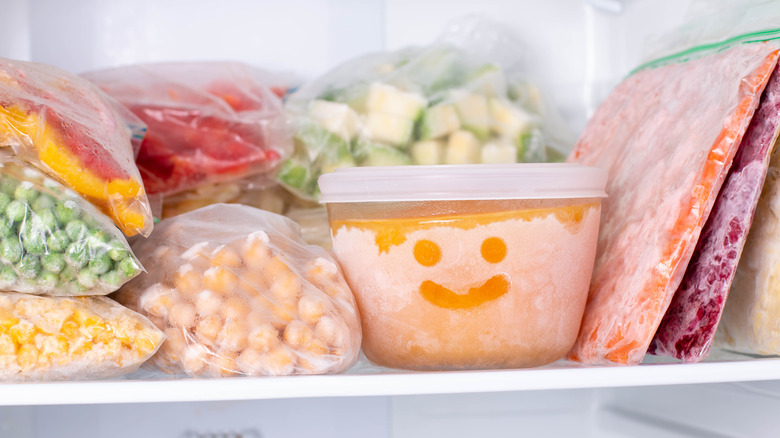The Origins Of Frozen Food Go Back Further Than We Thought
It's natural to think that frozen food didn't start showing up at grocery markets until the invention of commercial refrigeration and artificial ice in the 1800s — still nearly a century before it became a mainstay in American homes. And it took even longer for frozen meals to appear. Introduced by Swanson in 1953, they became an immediate hit, selling 10 million trays the following year and launching a new industry. However, the history of frozen food goes back much further than the 20th century and spans many continents and eras, inspiring the inventors and scientists who eventually made it possible to enjoy store-bought frozen appetizers and even celebrity chef frozen meals.
As with many origin stories — paper, printing, gunpowder, tea, silk, and the compass — the story of frozen food begins in China. Archaeology reveals that these Chinese civilizations were preserving food in ice cellars as early as 3,000 BC, leading some centuries later to yet another supposed Chinese invention, ice cream. Ancient Greeks and Romans also froze food in cellars insulated in compressed snow. Emperor Nero Claudius Caesar was a particular fan, forcing his slaves to bring back snow and ice from the mountains to cool his drinks and fill the ice cellar under the palace. He also legendarily created the first sorbets by combining the drinks with fruit and honey before freezing. Largely, this ice block method of freezing food remained the standard until the Industrial Revolution, when Prometheus gave humans the power to create artificial ice.
From slow freezing to fast freezing
While some focused on producing artificial refrigeration, it was Alexander Twining who produced the first artificial ice in 1856. That still left a large leap to reach the modern frozen food we know today, though, as freezing methods at the time often destroyed the food. That's because the freezing happened slowly, creating large ice crystals that damaged food cells and turned them to mush when melting. It was Clarence Birdseye — the same Birds Eye of frozen vegetables fame — who found the solution.
Working as a naturalist for the U.S. Government, Birdseye was posted to the Arctic, where he observed Native Americans fast-freezing their fish to preserve flavor and freshness. The method greatly reduced the size of ice crystals and preserved food better, even after unthawing. In 1930, he patented an artificial process of flash-freezing using high pressure. Realizing he'd need refrigerated transport and display cases to sell his frozen food, he invented those, too. The stage was now set for the frozen food revolution that Swanson kicked off a little over two decades later — now the DNA of dining today at home and away, especially for foods that hold up for a long time in the freezer.

